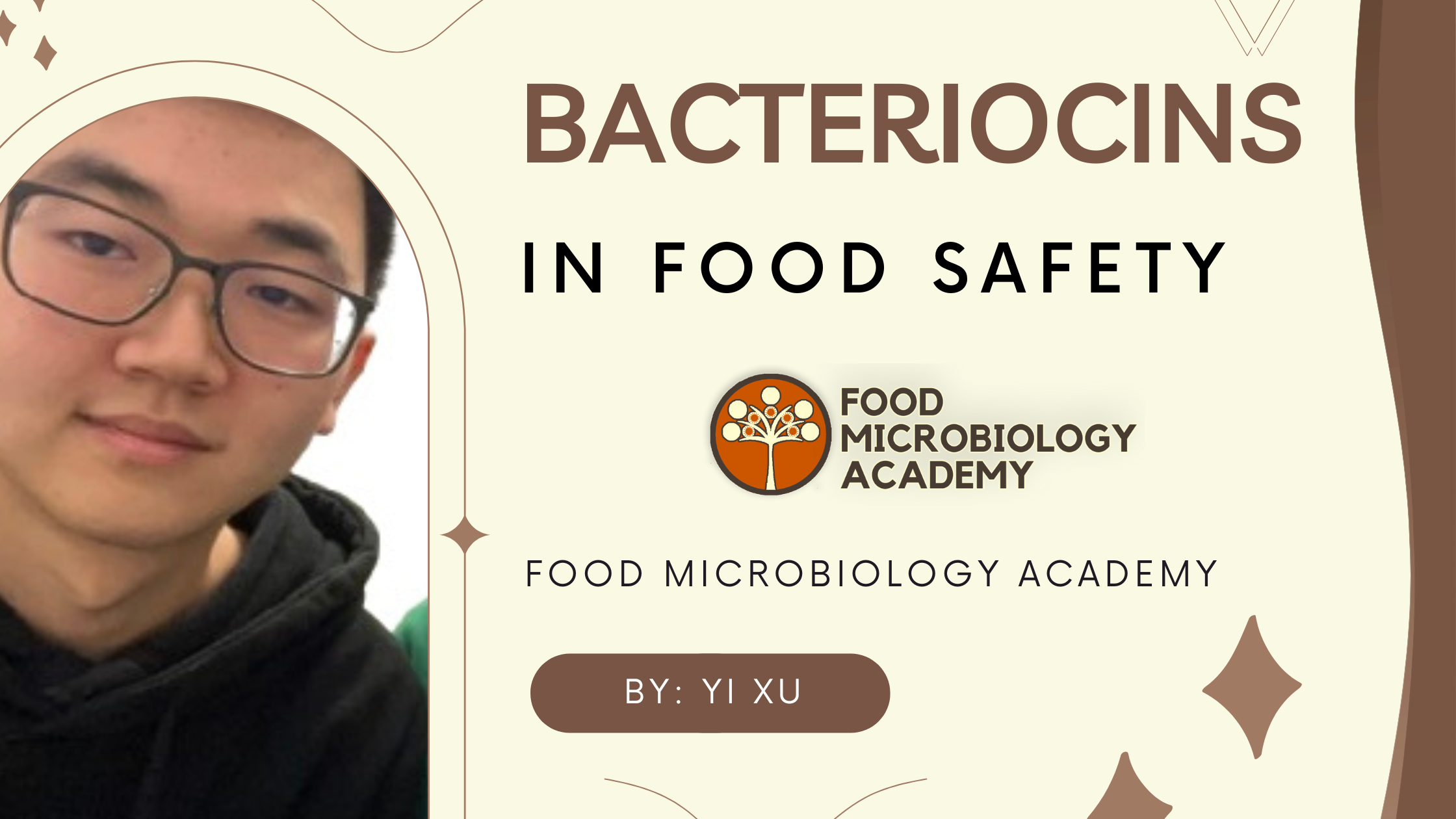A mini blog article by Yi Xu, a 3rd-year Bachelor of Pharmaceutical Science student from Monash University who did his industry experience internship with us between July 22 and August 16. This is his third mini blog article, as he develops his theme of bacteriocins in the food industry.
In today’s world, ensuring food safety is more critical than ever. With increasing consumer demand for natural and minimally processed foods, the food industry is constantly seeking innovative ways to preserve food without relying on chemical preservatives. One promising solution lies in the use of bacteriocins, naturally occurring antimicrobial peptides produced by bacteria, particularly lactic acid bacteria (LAB). Let’s explore the current applications of bacteriocins in food safety, along with the opportunities and challenges they present.
Applications in Different Food Categories
- Dairy Products:
- Nisin: One of the most well-known bacteriocins, nisin is widely used in dairy products to control pathogens like Listeria monocytogenes and Staphylococcus aureus. It helps extend the shelf life of milk, yogurt, and cheese.
- Pediocin: Effective against a range of food-borne pathogens, pediocin is used in dairy products for its stability and broad-spectrum activity.
- Lacticin and Enterocin: These bacteriocins are also employed in dairy to inhibit spoilage and pathogenic bacteria, ensuring the safety and quality of products.
- Vegetables and Fruits:
- Bacteriocins like enterocin AS-48 and plantaricin JLA-9 are used to control pathogens in vegetable soups, purees, and sauces. They help maintain the freshness and safety of minimally processed vegetables.
- Nisin and other bacteriocins are incorporated into edible coatings and films to preserve fresh-cut fruits and vegetables, reducing microbial contamination and extending shelf life.
- Meat and Seafood:
- Nisin, pediocin, and enterocin are used in meat products to inhibit the growth of spoilage organisms and pathogens like Listeria and Salmonella. These bacteriocins help maintain the quality and safety of fresh and processed meats.
- In seafood, bacteriocins are applied to control spoilage bacteria and pathogens, ensuring the safety of products like fish fillets and shrimp during storage.
Opportunities
- Natural Preservation: Bacteriocins offer a natural alternative to chemical preservatives, aligning with consumer preferences for clean-label products.
- Enhanced Food Safety: By effectively controlling pathogens and spoilage organisms, bacteriocins help reduce the risk of foodborne illnesses.
- Extended Shelf Life: The use of bacteriocins can significantly extend the shelf life of various food products, reducing food waste and economic losses.
- Synergistic Effects: Combining bacteriocins with other preservation methods, such as modified atmosphere packaging (MAP) or edible coatings, can enhance their effectiveness.
Challenges
- Regulatory Approval: While some bacteriocins like nisin have received regulatory approval, others are still undergoing evaluation. The approval process can be lengthy and complex.
- Production Costs: The cost of producing and purifying bacteriocins can be high, which may limit their widespread adoption in the food industry.
- Narrow Spectrum: Bacteriocins often have a narrow spectrum of activity, meaning they may not be effective against all types of pathogens. This requires careful selection and combination of bacteriocins for different applications.



